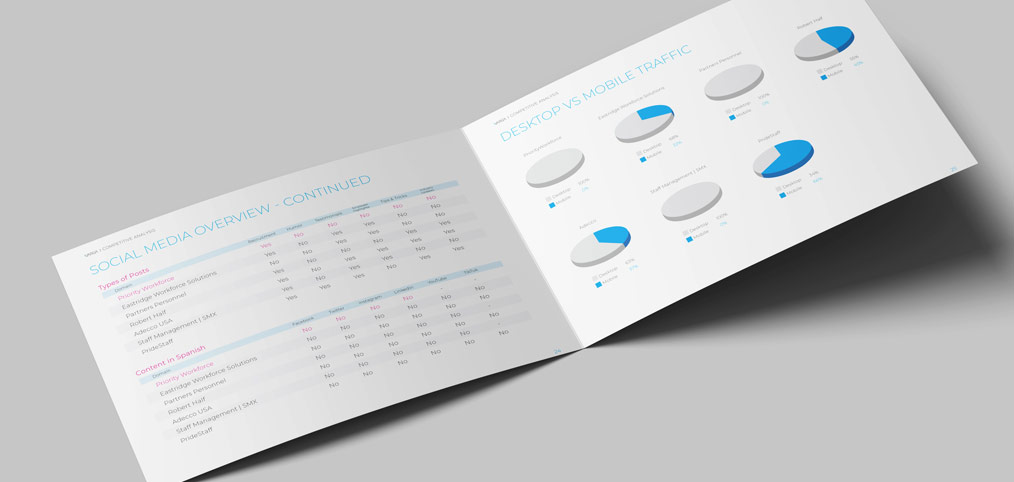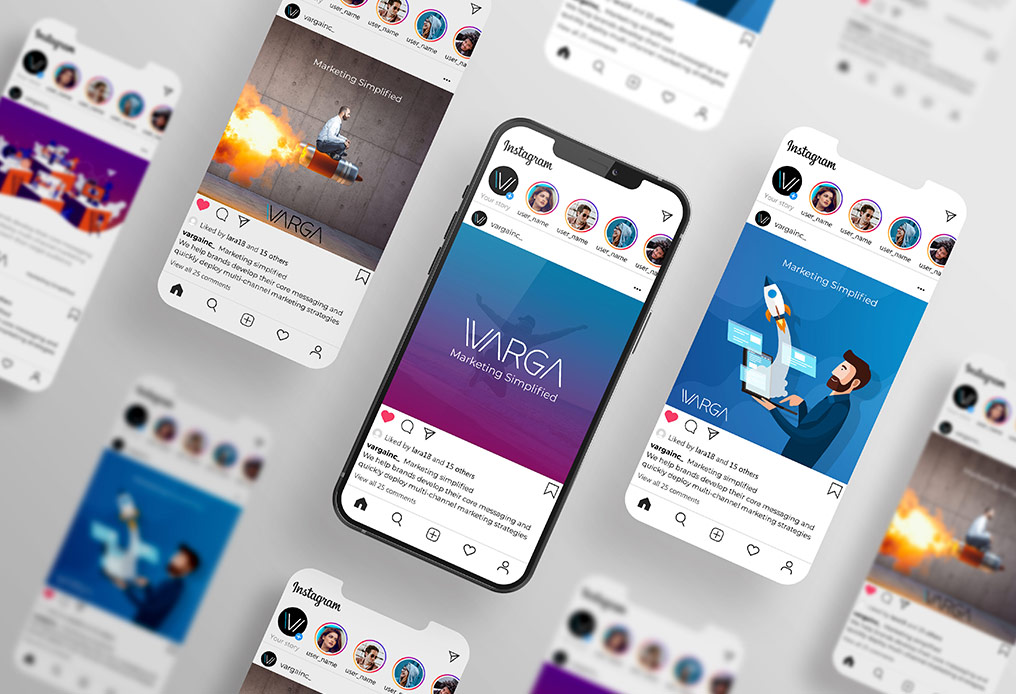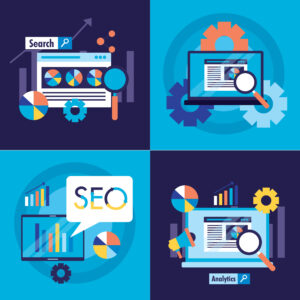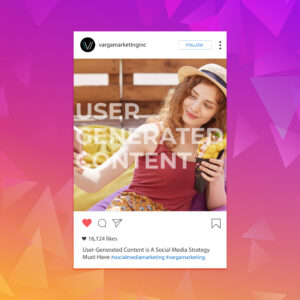If you run a business or manage a brand, you’ve likely encountered the term “marketing strategy.” The issue: you aren’t quite sure what it is or if you need one. We are here to decode! In essence , a marketing strategy is an informative and adaptable plan that guides a brand’s short and long-term actions to reach customers and achieve their goals. Read on to learn more about what defines an effective marketing strategy and how you can start building one for your business.
A marketing strategy is a plan you create to effectively promote your business and connect with your customers by considering multiple factors such as your ideal audience, your industry, your budget, your key advertising channels, and more. Modern strategies should help guide your choices in the long- and short- term to help your business grow.
A good strategy facilitates campaign planning, reduces the chances of costly mistakes, and can yield better brand awareness, better customer engagement and retention, and increased revenue.
When you build out a marketing strategy for your business, you should be crafting a plan that adapts, changes, and grows alongside you. As you can imagine, building out something this effective will take time and thought.
Here are 5 core components to include in any marketing strategy: goals, customer personas, your brand identity, competitor analysis, and customer-centric content.
Creating a business that has a single goal to sell isn’t going to get you far. You’ll want to create goals that are S.M.A.R.T. And that’s not just us emphasizing the word. S.M.A.R.T. stands for Specific, Measurable, Achievable, Relevant, and Time-Bound.
Creating goals that fit the SMART framework increases the chances that you’ll achieve your intended goal(s) by measuring your results and adjusting your strategy as needed.
See the difference? The basic goal to sell may be achievable but it is also vague. The SMART goal on the other hand gives you a timeframe, an achievable benchmark, and a way to measure what worked and what didn’t. This can teach you about what people want to see, where they engage with you the most, where your budget is best spent for advertising, etc.
Branding helps create your brand identity—the complete profile of your business. From the products you sell to the values you represent, your brand guides how you interact with your target audience.
Crafting a brand identity is extremely important to making your brand memorable and trustworthy. Effective branding is going to make it more likely that you’ll stick in peoples’ minds which, in turn, helps with sales and customer retention. It also makes it easier to stay “on brand” as you set out your marketing strategy.

Who is going to want what you have to offer? Answering this question is vital when creating a marketing strategy that is truly focused on your customers.
In the past, advertising focused on showing what a product was and why it was so great that everyone just had to have it. Some remember this as the “spray and pray” era. Not only does it sound gross, but it really wasn’t effective either.
Today, an effective marketing strategy focuses on providing content to target customers or a target audience. This is because we’ve learned that it literally pays to look at the wants and needs of your customers and your products or services meet these wants and/or needs. Keeping the focus on your ideal customer allows you to determine more accurately what they may be interested in and why, create content that addresses their needs, and then distribute that content in places that they spend their time on.

Sometimes looking at what your competition is doing makes it easier to see the path and actions you can take to get attention, set yourself apart, and succeed. If all your competitors are singing Soprano, stand out by showing up as the one Alto!
A thorough competitor analysis is one of the key services that Varga offers for a reason. We know that assessing the competition can give you vital information such as where you need to promote your content to reach your audience best. It can also help you figure out how to better set yourself apart through better branding or any other detail that you can leverage to highlight how you do things differently.
Content includes everything from blog post copy to video content. While content is literally what you make of it, whatever content you create for your business must be focused on meeting the customers’ wants/needs and stay relevant to what your brand or business is about.
Creating customer-centric content pays off with increased brand awareness, a better connection to your customers, and even an increased likelihood of future purchases.
According to Demand Metric, 80% of people enjoy learning about a business through the custom content they create. What’s more, up to 60% of people are more likely to purchase a product after reading about it.

Ultimately, when you create high-quality content that addresses what your customer wants or needs, it increases the likelihood that they will take the desired action you are marketing for.
If you’ve gotten this far, you’re likely trying to brainstorm how to start creating your brand’s strategy. We have a few straightforward steps to help you kick things off.
Building an effective and holistic marketing strategy takes some time, research, and work. Is it worth it? We’d argue it is for these reasons:
A cohesive marketing strategy helps you easily identify your target audience and showcase the products or services they are interested in signing up for or purchasing.
Part of your strategy will include establishing your business as one that can be trusted and relied on, which means your customers will feel comfortable coming back to you in the future.
Knowing what your business needs to focus on and how it will pursue those goals will also help you figure out how you can adjust that plan to keep things sustainable during times of adversity, like a sales slump or a full-blown economic recession.
You have a business to run but you can’t deny that a marketing strategy has the potential to make things better for you. The issue is finding the time to create a strategy that works. This is where Varga can help.
We keep Marketing Simplified by taking the hard work off your plate so you can spend your time where you are needed most. Our holistic approach will provide you with a cohesive, adaptable strategy that will magnify and grow your business.
Let’s start building your strategy today.









